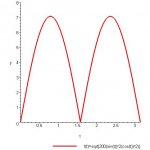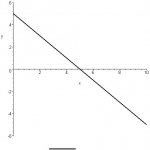Given:
x=5(sin t)^2
y=5(cos t)^2
0<t<pi
I am looking for the distance traveled by a particle, but seem to be stuck. I have the formula, but I think the problem is in my derivative. (dx/dt)=(10sin(t)cos(t))^2 (by the chain rule). I would like to then convert using the double-angle formula of 2sinxcosx=sin2x. I got 5sin^2(2t), but I think I am wrong. I can do the rest of the problem, I am just stuck with this part. Thanks!!
x=5(sin t)^2
y=5(cos t)^2
0<t<pi
I am looking for the distance traveled by a particle, but seem to be stuck. I have the formula, but I think the problem is in my derivative. (dx/dt)=(10sin(t)cos(t))^2 (by the chain rule). I would like to then convert using the double-angle formula of 2sinxcosx=sin2x. I got 5sin^2(2t), but I think I am wrong. I can do the rest of the problem, I am just stuck with this part. Thanks!!


